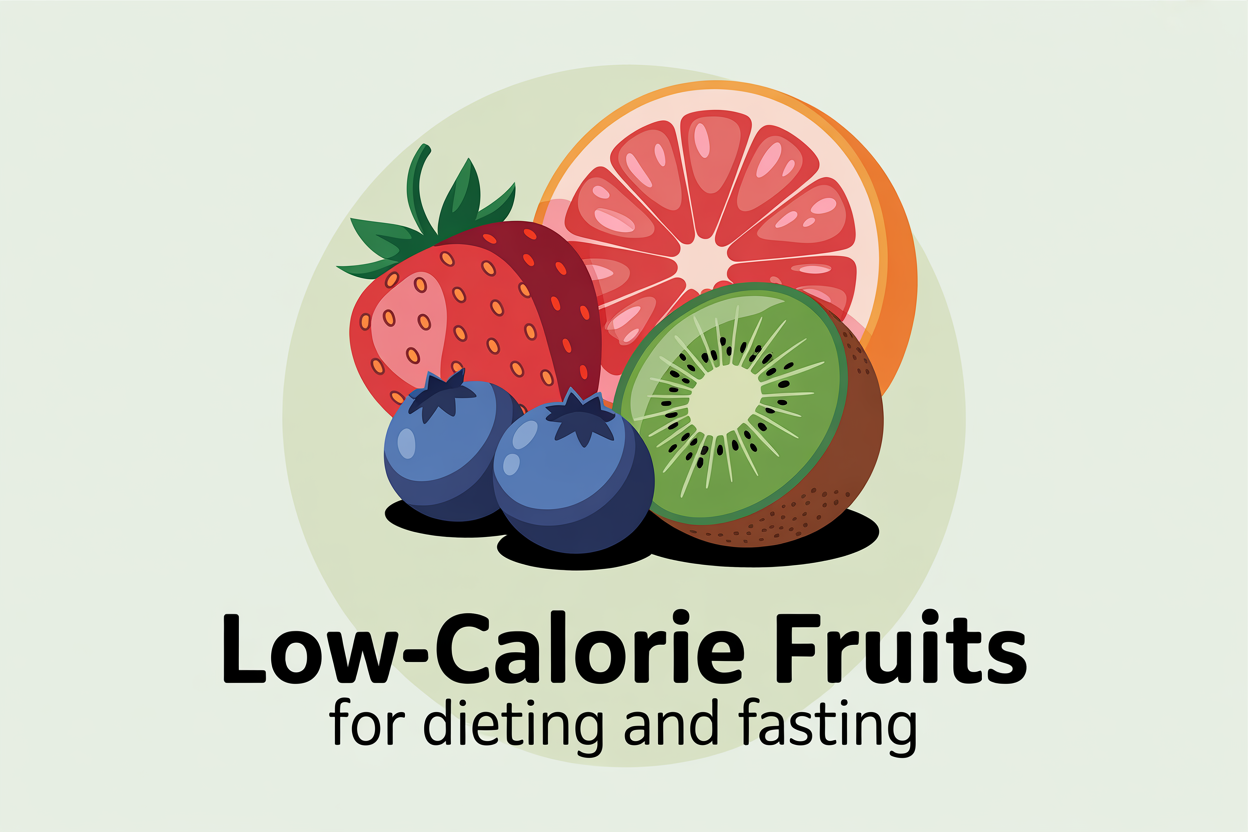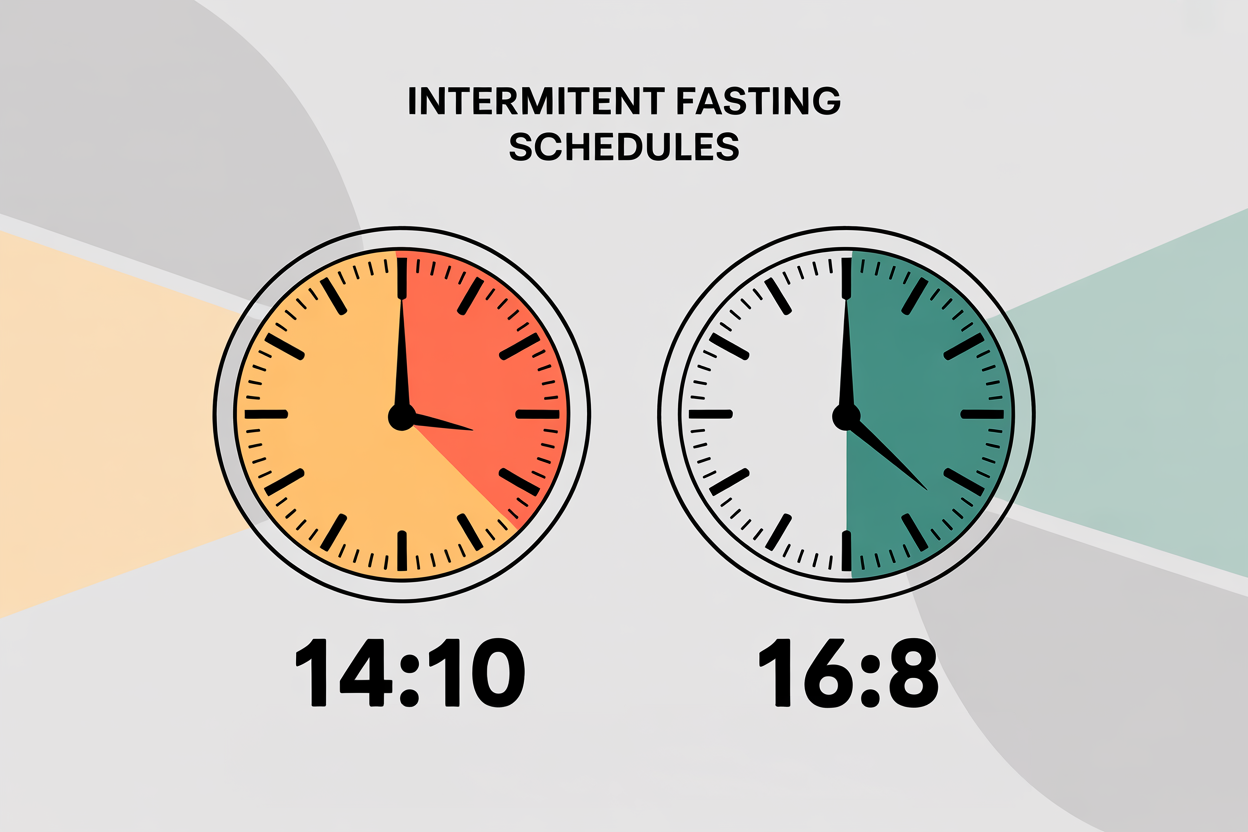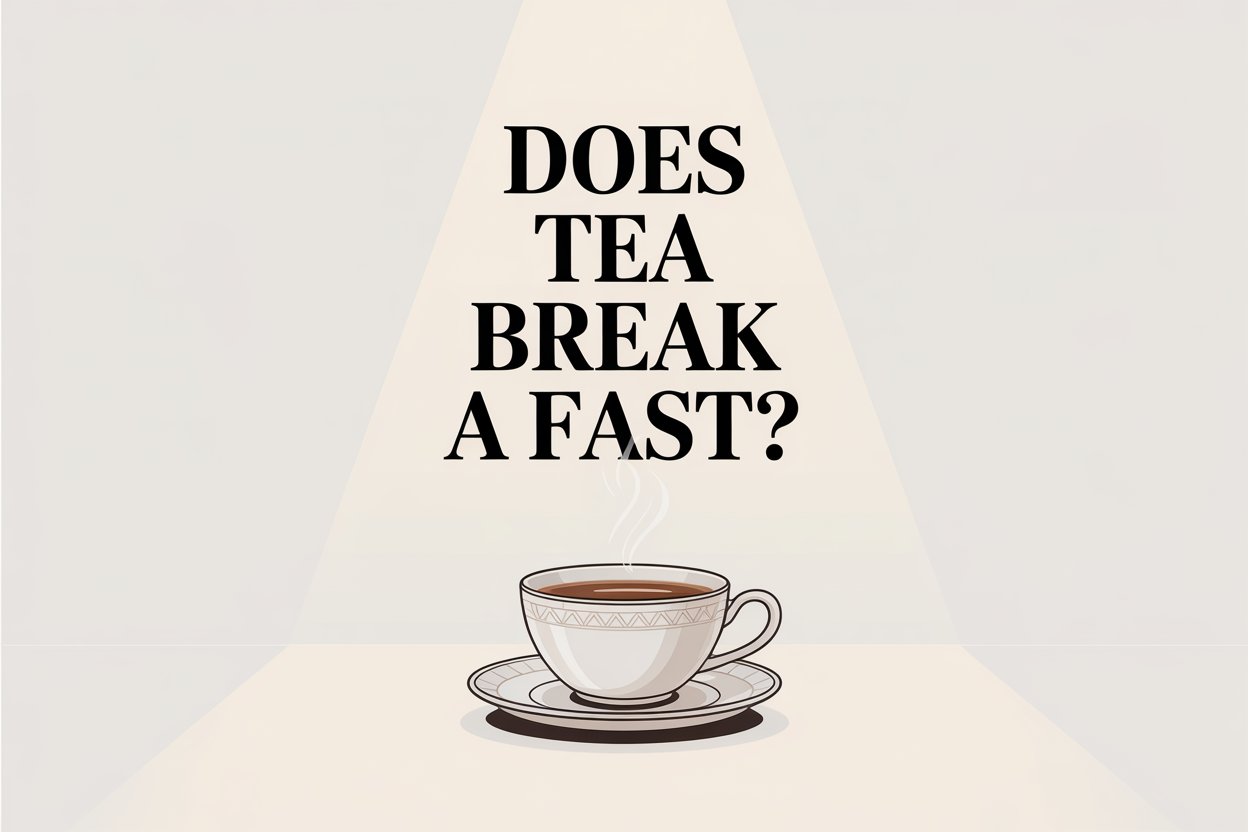Late morning on a 16:8 schedule, the kitchen is quiet and the clock says you still have an hour to go. Hunger taps the glass anyway. You reach for the fruit bowl and pause. If you are trying to keep calories low and appetite steady, which fruit belongs in your hand, and which one will leave you hungrier an hour later?
That question is the heart of every clean, practical plan that leans on low-calorie fruits. In this guide, we will rank your best fruits for fasting by fiber, water content, satiety, and fasting friendliness, then show exactly where to use them before, during, and after your eating window so fruits for weight loss work with you, not against you.
The Decision Lens: Calories per Bite vs. Satiety per Bite
The right fruit is not only the lowest in calories. It is the one that gives you the most fullness per bite. Four levers shape that outcome. Calories per 100 grams tell you how expensive each bite is. Fiber per serving slows digestion, triggers gut hormones related to satiety, and steadies the post-meal curve.
Water percentage adds volume that stretches the stomach at almost no calorie cost. Glycemic impact signals how quickly hunger may rebound, which is crucial in time-restricted eating. When those levers line up well, you get more mileage from fewer calories and avoid the snack cascade that can follow sweet choices eaten alone.
In practice, watery, high-fiber fruits like berries, citrus, and melon usually win for fasting and dieting because they buy time, tame cravings, and keep the rest of your plan intact.
How Fruit Fits Different Fasting Windows
Fruits are tools, and tools need timing. In a 14:10 or 16:8 rhythm, fruit can open the window or ride next to protein and fats. This is where strawberries, raspberries, melon, grapefruit, and oranges shine. They deliver hydration and micronutrients and let you front-load volume without overshooting calories.
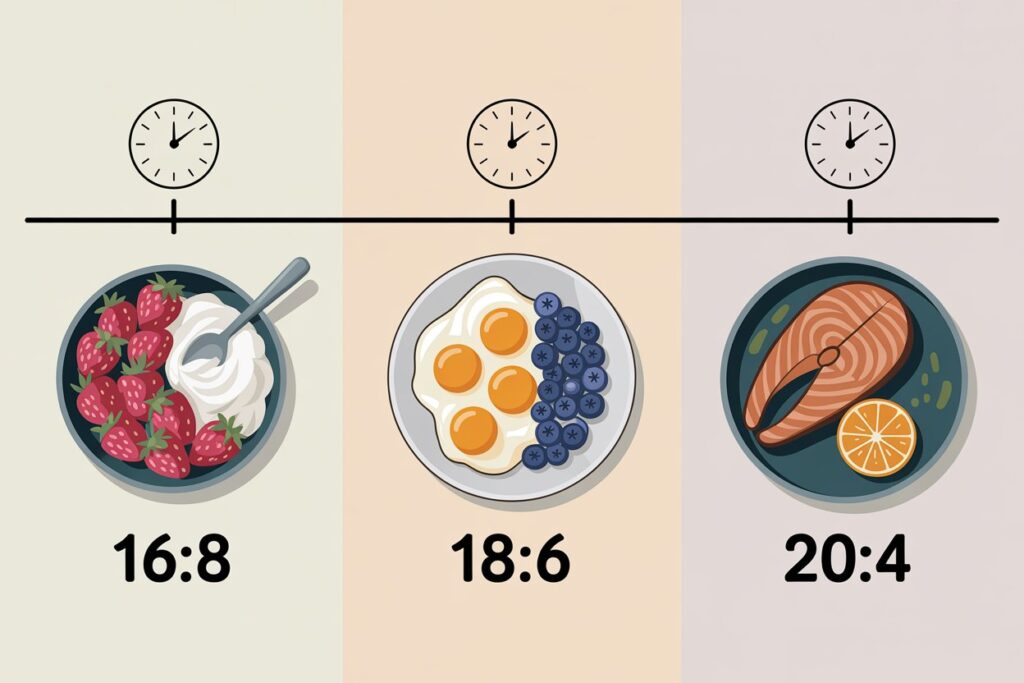
In 18:6, you often feel better starting with protein and vegetables, then layering low-calorie fruits for volume and color. The protein anchor keeps appetite calm and turns fruit into reinforcement instead of a trigger.
In a 20:4 hour fast, often called Warrior-style, fruit works best as a side or palate cleanser inside your two plates or single large plate. The goal is to prevent fruit from crowding out protein. That is even more important when you are compressing all nutrition into one short window.
Training changes the script. On morning training days, save fruit for the eating window and pair it with protein, or if you train right at the open of the window, choose a lower glycemic fruit that complements your recovery meal.
On evening training days, treat fruit as an accent to the main protein and carbohydrate sources that refill glycogen. Outside the window, keep clean fasting: water, plain tea, black coffee only. That clean line is what preserves consistency in intermittent fasting 16:8, helps 18:6 fasting feel steady, and keeps 20:4 from turning into a graze.
Truly Low-Calorie, High-Yield Fruits
Think of this as your core roster. Rotate two to three each week for variety and micronutrient coverage. Later, you can drop a small table with USDA calories and fiber per 100 grams and per common serving. For now, use these notes to build plates that work.
- Strawberries: Very low calories per 100 grams with high water content and a pleasant acidity that pairs well with dairy. They are ideal in a protein-forward yogurt bowl when you open the window, and they scale easily from a handful to a full cup without breaking the budget.
- Watermelon and other melons: Hydration heroes with a high water percentage for volume eating. Cube them and pair with salty foods or a protein to reduce rebound hunger. A cup of melon takes a long time to chew and brings relief on hot days.
- Blackberries and raspberries: Fiber-dense per calorie and powerful for satiety and glycemic steadiness. They make cottage cheese or skyr feel like a complete meal, and their tart edge reins in sweetness.
- Cantaloupe and honeydew: Gentle sweetness with hydration. Use cubes to bulk out mixed bowls so you displace higher-calorie add-ins. These melons are forgiving and can be prepped in advance without losing texture.
- Peaches and nectarines in season: Modest calories with aroma-driven satisfaction. Grill or chill them, then pair with ricotta or Greek yogurt. Fragrance matters for satiety, and stone fruit delivers it.
- Grapefruit and oranges: Segments create built-in portion control and slow eating speed. The pith adds fiber, and the acidity helps as a bridge if dinner runs late within the window. Citrus also travels well for workdays.
- Kiwi: Compact and balanced with tart-sweet flavor and solid fiber for the calories. Eating the skin is optional, but it ups the roughage for minimal cost. Slice it alongside eggs or a tofu scramble for contrast.
When most of your fruit comes from this low-calorie fruits list, your plan feels generous without draining the calorie budget. That is the path to high-fiber fruits for weight loss that deliver day after day, and the reason these are the best fruits for fasting.
“Sometimes” Fruits: Tasty but Easier to Overeat
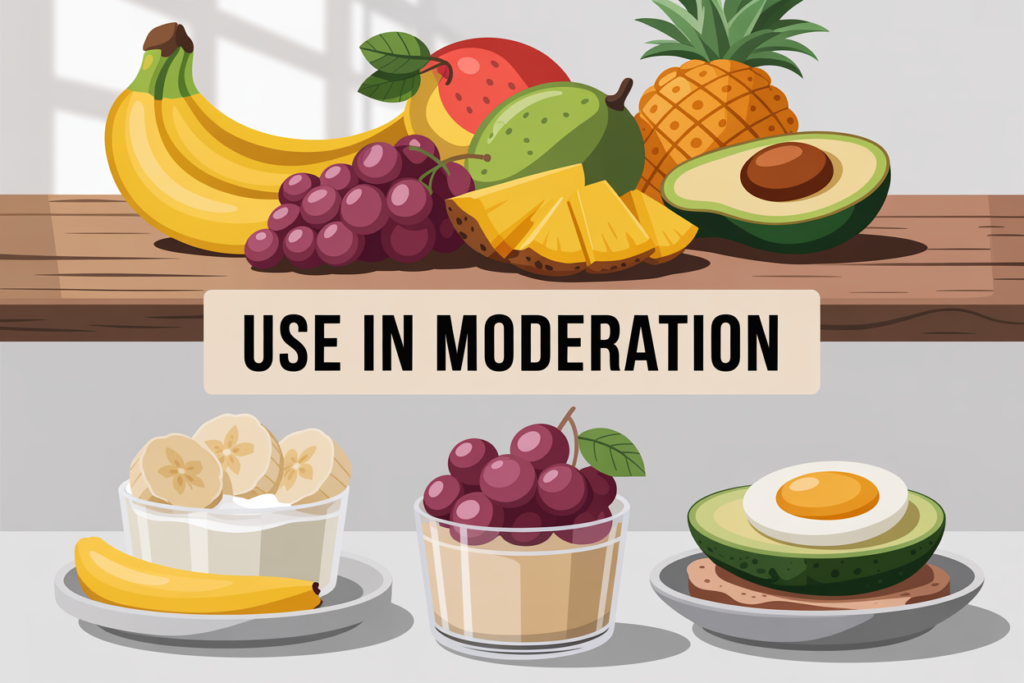
Healthy does not always mean easy to fit. These fruits are fine when portioned and paired, but they become expensive quickly if eaten alone or mindlessly.
- Bananas: Portable and filling, yet energy dense. Slice half into a protein bowl rather than eating a whole fruit before a meal. The other half can close the window.
- Grapes: Sweet and snackable, which is the problem. Freeze portions so you eat slowly and use them as a sweet finish after protein.
- Mango and pineapple: Intense sweetness with vacation energy. Use a small accent in a larger, lower-calorie mix so you get joy without the spike.
- Avocado: Botanically a fruit and nutrient-rich, but high-calorie. Treat it like a fat source on salads or eggs rather than a dessert fruit.
Used with portion control, these choices support results. Used as free-for-all snacks, they can outpace your goals. That is why they belong in the fruits to limit for weight loss bucket and why they live under high-calorie fruits in your mental map.
Satiety Pairings That Work
Fruit does its best work next to protein and a little fat. That pairing slows gastric emptying, smooths the glycemic curve, and keeps you full when the eating window is short. Keep combinations simple so they are easy to repeat.
- Greek yogurt or skyr with berries
- Cottage cheese with peaches or pineapple and a shake of cinnamon
- A chia pudding base with kiwi and strawberries
- Ricotta with grilled nectarines and balsamic
- A protein shake blended with frozen raspberries, topped with sliced strawberries
- An omelet or tofu scramble on the savory side, then an orange as a paced finish
The psychology matters. If fruit reads as dessert, make it the final ten percent of the plate, not the first ninety. That single choice helps you avoid dessert creep while preserving the joy of sweet flavors inside your window. It is the quiet engine behind high-protein snacks that actually reduces total intake, and a clean way to merge fruit and protein for the best fruits for weight loss outcomes.
Hydration, Electrolytes, and Cravings Management
Water-rich fruits do double duty. Melons, citrus, and berries carry water and potassium that support fasting hydration and help with the dull headaches that appear when people under-drink. During the fasting window, hydration should be calorie-free, so keep it to water, black coffee, and plain tea.
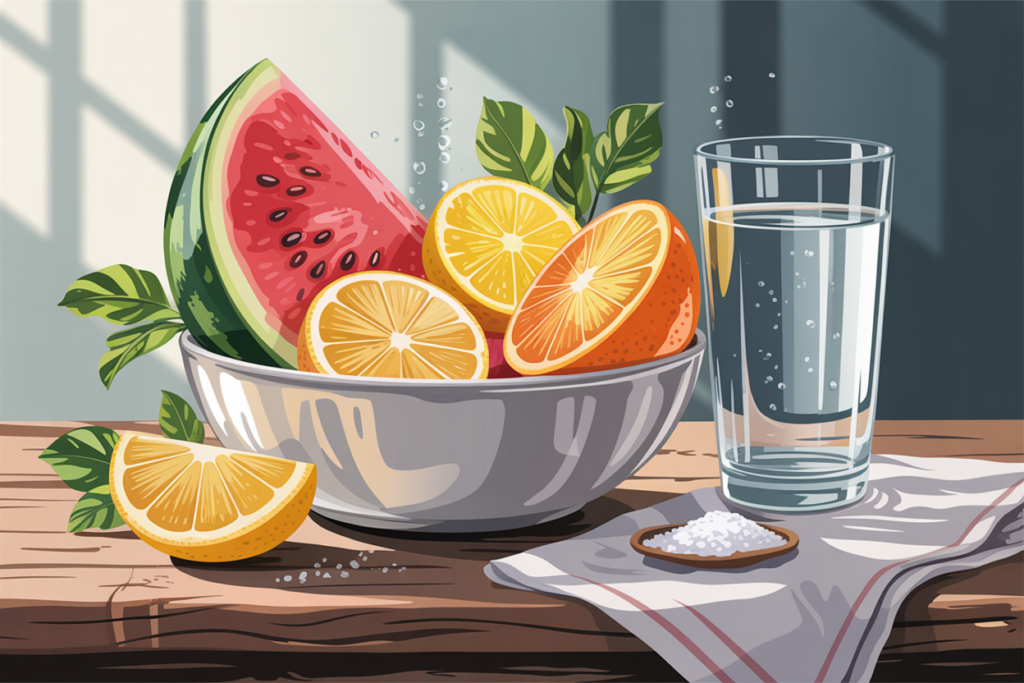
Inside the window, use fruit volume alongside salty, protein-forward meals to settle cravings and reduce grazing. A bowl of melon with cottage cheese and a pinch of salt can be more satisfying than a protein bar because it hits water, electrolytes, and texture all at once.
When afternoon dips creep in, a measured serving of oranges or grapefruit segments often restores energy without triggering a sugar chase. In short, water-rich fruits help calm the edges, allowing you to stick to the plan.
Grocery Strategy and Prep Rituals
Shopping and prep make fruit either an ally or an ambush. Shape the environment so the easy thing is the right thing.
- Buy in forms that slow you down: whole citrus and whole kiwi you have to peel, clamshell berries you rinse. Avoid giant tubs of chopped mixed fruit unless you portion them immediately.
- Pre-portion melons and grapes into single-serve containers. Freeze extra berries for smoothies or protein bowls so you do not feel pressure to finish them fast.
- Keep a rainbow rule each week: two low-calorie berries, one melon, one citrus, and one in-season stone fruit. This keeps variety high without blowing the budget.
- Put fruit at eye level in the fridge and store it next to protein options like skyr, cottage cheese, hard-boiled eggs, or tofu. When the window opens, your hand will find the pair automatically.
This is weekly meal prep for real life. It turns your healthy grocery list into frictionless habits and makes fruit prep for weight loss a five-minute ritual instead of a Sunday project.
Important Info for Those Keto-Leaning, Low-FODMAP, and Diabetes
Plans are personal. If you are keto-leaning, keep total carbs aligned with your target and treat fruit as garnish. Berries in measured portions and lower-sugar melons work best. If you follow a low-FODMAP approach for GI comfort, know that some fruits can trigger symptoms.
Strawberries, oranges, and unripe bananas are often better tolerated than mango or apples, but tolerance varies. Track your own response and adjust. If you live with diabetes or glucose dysregulation, pair fruit with protein and fat, watch portion size, and favor lower glycemic choices.
Coordinate with a clinician if you use glucose-lowering medication. None of this turns fruit into a villain. It simply honors the reality that keto-friendly fruits, low-FODMAP fruit lists, and diabetic-friendly fruits overlap but are not identical.
Timing Plays: Where Fruit Belongs Inside Your Window
Placement shapes results. Use fruit with purpose.
- Opening the window: pair berries or citrus with a protein anchor. This stabilizes appetite, reduces the urge to snack later, and supports muscle retention on a deficit.
- Mid-window bridge: if dinner is delayed, use water-rich fruit. Grapefruit segments, an orange, or melon cubes keep calories low while guarding against a hunger cliff that pushes you into overeating at the main meal.
- Closing the window: finish with a measured fruit dessert to satisfy sweet taste and stop grazing. A cup of strawberries or a sliced peach with a little ricotta tells your brain that the meal is over.
For 20:4 fasting, fruit is an accent to protein-rich meals, not a stand-alone mini-meal. In a four-hour window, you must protect protein and essential calories first. Fruit rides along to add volume and micronutrients without squeezing out what matters.
What to Watch: Hidden Calories and Sugar Bombs Dressed as Fruit
Not every fruit food is fruit. Beware the traps.
- Smoothies with juice bases and nut-butter add-ins that triple calories
- Fruit-on-the-bottom yogurts with added sugars that outpace whole-fruit bowls
- Dried fruit and fruit leathers that compress calories and drop water-driven satiety
- Superfood bowls with granola and honey that outrun the day’s budget in one serving
The fix is simple. Choose whole fruit first. Pick unflavored, high-protein yogurt or cottage cheese. Build blended drinks on water, ice, or unsweetened milk and include measured fruit plus a protein scoop.
This is how you create a low-calorie smoothie that behaves like a meal, not a calorie trap. Read labels, trust your measurements, and remember that dried fruit calories move fast because the water is gone.
Simple Portion Guide and Serving Ideas
Keep portions friendly and repeatable. You can pair these with a small calorie and fiber table later.
- One cup of strawberries with skyr and a teaspoon of chia
- Three-quarters cup of raspberries folded into cottage cheese
- One orange after a protein-heavy plate
- One cup of melon cubes with a salty main to balance the sweet
- One kiwi, peel optional, alongside eggs for extra fiber
The goal is volume and satisfaction on a budget. Portion control works best when the food is generous and the plate is anchored by protein.
The Bottom Line: Low-Calorie Fruit is Great for Time-Restricted Eating
Low-calorie fruits help because they buy fullness and hydration at a discount of calories. They carry fiber, water, and micronutrients that let you eat a lot for a little, which protects adherence in time-restricted eating. The win appears when fruit displaces calorie-dense foods and rides next to protein inside the window.
Precision matters less than patterns. Water-rich and fiber-rich, plus protein-anchored beats sugar-centric smoothies and snack-y grazing every time. This is how fruits for weight loss and the best fruits for fasting turn into a habit you can live with.
Track Your Hunger and Fast with the Fasting App by Municorn
Run a simple two-week A/B test inside your current schedule. In week one, open the window with a protein-only start and keep fruit for later in the meal. In week two, open with a protein plus low-calorie fruit combo and keep portions consistent. Track hunger, cravings, total calories, workouts, and sleep.
Use the Fasting App by Municorn to log windows, meals, portions, and satiety notes, then compare trends side by side. The right fruit in the right place can make fasting easier, weight loss steadier, and your plan feel sustainable. Make your data tell you which approach keeps you full, keeps you moving, and keeps you on track.

